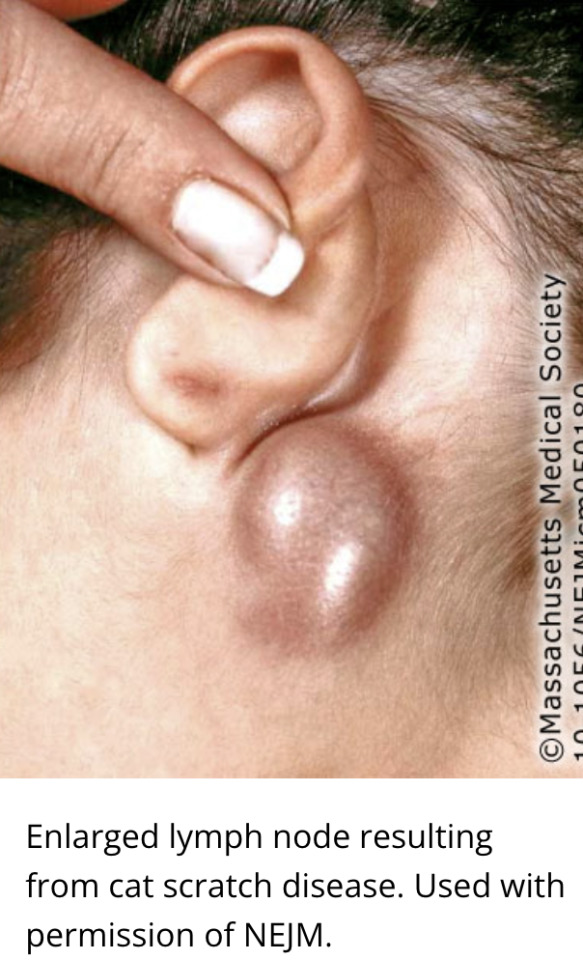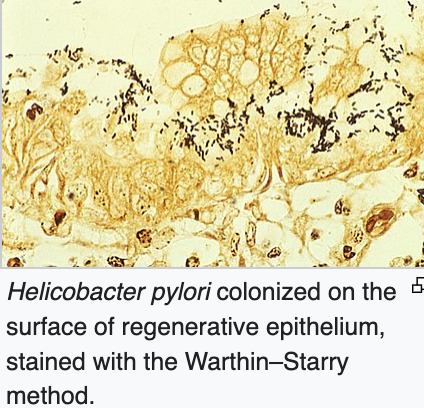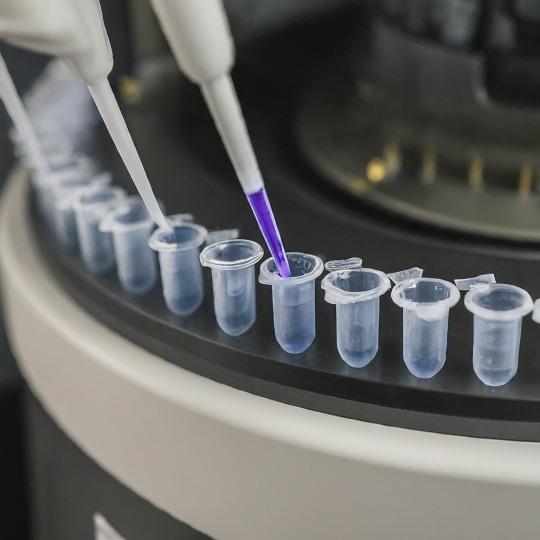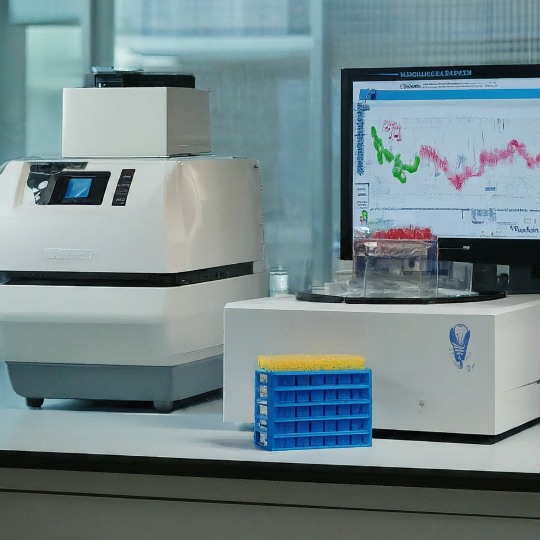#On Site PCR Test
Explore tagged Tumblr posts
Text
Also preserved on our archive
Swab, swirl, squirt, sit tight. By now, you’re likely familiar with the ritual of performing a COVID test at home or on the go. Disease detection has evolved swiftly since 2020, when you may have had to seek out a pop-up testing clinic or wait hours in line at your local health department, with clinicians on standby to stick a cotton swab up your nose.
Rapid COVID tests have since become a staple of cough-and-cold aisles across America, and just weeks ago the federal government resumed its periodic distribution of four free tests per household. But the convenience of self-testing comes with a caveat: The onus is on you to report your results.
First, know that test reporting isn’t mandatory in the U.S., so you’re hardly in hot water if you haven’t documented your COVID infection or lack thereof with the Centers for Disease Control and Prevention (CDC) or state or local public health authorities. Though perhaps more people would self-report if it were a requirement, says Dr. Sujata Ambardar, an infectious disease specialist at Inova Fairfax Hospital in Falls Church, Va.
“People probably are not self-reporting because they don’t want to have to not go to work—or they may want to go to work—it’s different reasons, and they may not want other people to know,” Ambardar tells Fortune. “Human nature is that they’ll probably only do it if they have to do it. Once you make it non-mandatory, then they tend not to do it.”
Today, if you get an antigen or PCR COVID test in a clinical setting, it’s still your health care provider’s job to report your results. While you’re well within your rights not to report your home test results, not doing so can come as a detriment to public health.
Between Feb. 1, 2022, and Jan. 1, 2023, an estimated 54 million adult COVID cases were unaccounted for in official records, according to a national study published Sept. 30 in the journal JAMA Network Open. That’s more than twice as many as those documented. At the state level, unaccounted infections ranged from 59,000 in Wyoming to 6.3 million in California. Researchers cited the government-led mass distribution of at-home tests as a possible driver of the discrepancies.
Report COVID results at MakeMyTestCount.org In theory, Ambardar says, reporting your COVID test results is “just one extra step.” But when that second line appears on the test card, confirming the disease has hit your household, formally documenting the outcome may not be your first priority. Even if you’re negative, you were likely feeling poorly enough to take the test in the first place and may not feel up to self-reporting.
But if and when you choose to do so, visit MakeMyTestCount.org to securely and anonymously report both positive and negative COVID test results. The site is a collaboration between medical data firm Care Evolution and the National Institute of Biomedical Imaging and Bioengineering, part of the National Institutes of Health.
MakeMyTestCount.org is free to use and doesn’t require you to immediately self-report. In fact, your results don’t even have to be recent. As of early October, the site allowed for the input of home test results going back to November 2021. If you need proof of illness for work or school, the site provides documentation. And while over-the-counter tests that screen for both COVID and flu aren’t as common as those that screen for COVID alone, you can report those results on the site, too.
Keep in mind that it’s just as important to report negative results as positive ones. The week ended Sept. 21, national COVID test positivity was 11.6%, CDC records show, down from 13.4% the previous week. If not for the inclusion of negative results, test positivity would always be 100%.
Depending on the brand of COVID test you’re using, you may not have to visit MakeMyTestCount.org at all. Some brands, such as iHealth, offer a free corresponding smartphone app. With the tap of your finger, you can forward your results to the CDC and/or your health care provider. If you have the time, notifying your doctor can help guide the course of COVID treatment in your community, says Dr. Donald Dumford, an infectious disease specialist at Cleveland Clinic Akron General.
“The more we know about the true number of cases of COVID, the better we’re able to understand the transmission of COVID at this point in time, as we go from it being pandemic to endemic, which means it’s just something we live with now,” Dumford tells Fortune. “It also helps us to identify the potential rise of new strains of infection, especially if you’re seeing a strong uptick in cases.”
Study Link: jamanetwork.com/journals/jamanetworkopen/fullarticle/2824211
#mask up#covid#pandemic#wear a mask#covid 19#public health#coronavirus#sars cov 2#still coviding#wear a respirator
68 notes
·
View notes
Text
Listening to a book about the deep sea and she throws in as a one sentence aside that deep sea enzymes are used in Covid tests then moves on. So I went. Wuh. Huh. And googled it. And found a guardian article about deep sea antibiotics that ALSO mentioned it in one sentence before moving on. And THEN found a .gov site with a like. Press release about how taq polymerase in pcr was discovered in thermas aquaticus in Yellowstone. Which. One. I already knew. Two. Is not what the guardian nor my book said
#I get scared reading nonfiction bc sometimes people say things I know are wrong and sometimes ppl say things I think are interesting and#then I look them up and they’re wrong
32 notes
·
View notes
Note
Coming to terms with having long COVID has fucked up my slut game so bad. I need to avoid reinfection 2000% but I am so horny. Do you or any of your followers have ideas about navigating COVID safer hookups. I know some people just mask but my brain tells me that isn't enough? Like what if a condom isn't enough to stop it either? Idk what to do. I cannot accept celibacy. Please send warm wishes of future orgasms.
You probably already know what I'm going to say, but: outdoor cruising, car play with the windows open, and solo hookups. Remember that air filtration actually matters a whole hell of a lot more than masking (and masking doesn't necessarily work all that well in the absence of air filtration/ventilation). Some cruising events at bars and dungeons do encourage masking, require testing, and use air filters, so search your local community for those or think about collaborating with others to hold such events. I think the strictest protocol you could probably go for is to require a potential hook up to send you a negative PCR before coming to your (ventilated or air filtered) home, and perhaps even asking them to mask when possible, or booking an outdoor site such as a house with a big private yard and hooking up there. But there are no guarantees that doing everything "right" will prevent infection, illness is not moral, and many of the measures a person can theoretically take to mitigate risk are practically inaccessible for a variety of reasons, including finances. Do what you can live with, and take risks you can accept the potential consequences of.
44 notes
·
View notes
Text
flying to the intersex conference and I hate how almost everyone at the airport is unmasked 👎 I’m so glad the conference is taking covid very seriously and has a masking policy and required on-site PCR tests. I’m so fucking nervous that they’re gonna break my wheelchair on the airplane but I am HOPING it all works out
22 notes
·
View notes
Text
Gary Heavin and Mike Adams discuss J6 prisoner rescue operations that are mobilizing now - this interview is long but Gary Heavin has an organization that is going to help J6ers transition back into society once President Trump releases them. I found the interview to excellent. Many of these people who did nothing wrong have been rotting in jail for 4 years. No matter what any of them did they were denied their civil liberties and the God given rights to a fair and speedy trial and they ALL should be set free and their records wiped clean - 56 min. VIDEO
If you do not want to listen to the video HERE is the site
The Climate Hoax - many of the catastrophes we see today are man made and do not come from nature. This is how they continue the lie - LBJ once said “if you control the weather you control the world - LBJ 1962 “It lays the predicate and foundation for the development of a weather satellite that will permit man to determine the world’s cloud layer and ultimately to control the weather; and he who controls the weather will control the world.” ARTICLE
US government implemented its One Health Framework last week - ARTICLE
Video: The Mysterious Death of the Inventor of the PCR Test, Nobel Laureate Dr. Kary Mullis - after reading Good Intentions (a book from 1990 by Barry Nussbaum) about the AIDS epidemic and Fauci, watching numerous videos with Dr. Mullis I truly believe his death was NOT natural. If he were alive he would have put a huge crimp in the agenda. A healthy, active 74 year old scientist dies at home of pneumonia?? Really?? These people are ruthless and like Dr. Mullis said in reference to his speaking out “these people are willing to go to great lengths to prevent that.” ARTICLE/VIDEO (4 min.)
In this short video Greg Reese mentions an interview Celia Farber did with Dr. Mullis in 1994 so I dug up a copy of that interview for Spin Magazine in 1994.

Hiv & Aids Interview With Kary Mullis
77.1KB ∙ PDF file
Download
Who are Casey, Calley and Grady Means, and What are They UP TO? by Dr. Neryl Nass - The moment I read that Calley Means was involved with the CFR (Council on Foreign Relations) was all I needed to know about him to know he is bad news. In a recent interview with Dr. Kruse (which I shared) Calley Means said he hardly knew Trump or Kennedy. Obviously a flat out lie. If you missed that interview with Kruse and Means you should look it up. Dr. Kruse flat out said to Calley’s face he did not trust him several times. Something stinks in the land of OZ. AND. I have never trusted Carlson and have made that clear many times. Although some of his interviews are good I do not trust him. I believe he is paid, controlled opposition. Both articles embedded in Dr. Nass’s post are interesting and should give pause to at least consider we are bring taken for a ride. I cannot wait for Ms. Lerman’s article on Grady Means (Calley and Casey’s father). ARTICLE
5 notes
·
View notes
Note
Not sure if appropriate but too mad to care. Fuck SA Pathology. My girlfriend is sick and we are both disabled but can walk (she only short distances) and unable to drive. She needs a pcr test because RATs don't work on her, she's part of the 20% that don't work. She called to see if SA Pathology would have a domicile visit for a test. The lady on the phone kept talking over her and telling her to just walk to the nearest site. Domicile visits are for people who cannot walk at all. The attitude was disgusting.
That's fucking crazy because literally last week Clinpath sent a pathologist to my home to get my bloods?? I'm in no way physically disabled, just laden with small children and time poor. I didn't even ask for it, they offered it. Try Clinpath!
11 notes
·
View notes
Text
Bartonella henselae
Case Report:
23M veterinary student from home with a cat, presents with a one year history of neck swelling, 1 month of fevers and lethargy. Also he lives in Karachi.

The fevers are a/w chills and rigours that response to paracetamol and have no particular pattern to them.
He doesnt have any arthralgias or arthritis or rash.
They find pretty sizable lymph nodes on exam in the cervical chain and inguinal regions.
He starts developing hypotension and they start him on some vasopressors and meropenem.
The fevers don't respond, and someone decides to start azithromycin, which it does respond to.
He's also worked up for IE given the chronicity of events.
Eventually on biopsy of the lymph node, the lab finds bartonella hensalae.
Microbiology + transmission:
aka cat scratch fever, so this is why history is so important to infectious diseases physicians.
it's actually disease of cats that can spread to their humans via bites and scratches. Or the cat licks a wound etc.
and unfortunately also via arthropod vectors and mossies
after entry into a host, it's main target cells are CD34s, immune cells, and then alters the host immune system
it's interesting special power is that it can predispose hosts to other pathogens in this manner

it's a gram negative rod (pink rods)
Historical trivia
the fun bits
genus of Bartonella is named for a Peruvian scientist (Alberto Barton, also had interest in brucellosis and leishmaniasis --> other tropical diseases taht cause fevers of unclear origin), he isolated the bacteria from patients during an outbreak among railway works in South america. This was 1905.
reminds me of love in the time of cholera, when people still wrote physical letters.

species of bartonella henselae is actually named for Diane Henselae, a researcher from Oklahoma, who collected samples during an outbreak there in the mid 1980s.
rare for someone who discovered a species named for them to be both alive and a woman, and I can't find much about her online.
there are other bartonella species that cause historically significant diseases like trench foot (bartonella quintana, transmitted by lice) and carrion's disease (bartonella bacilliformis, with a high mortality rate). another post for another day.
Clinical features
incubation period: up to 10 days
initial: rash at site of injection or intro of pathogen, from there it travels to local lymph nodes causing lymphadenopathy about 1-3 weeks later
From CDC guidelines who took image from NEJM

Bsymptoms - low grade fevers/malaise/fatigue
epidemio: occurs most often (for a rare disease) in kids < 15
Complications
infection affecting the eye (neuro-retinitis = visual changes, irritation and photophobia), liver, spleen, brain/spine (transverse myelitis, encephalitis etc), bones and heart valves (IE)
Increased risk groups for complications
HIV/AIDs, immunocompromised hosts (i.e. transplants), mortality is an issue in this group, as disseminated disease a possibility
small risk of IE in groups with RFs for develop this (prosthetic valves, damaged valves, unrepaired congential heart disease etc)
Investigations
challenging, no gold standard test as the sens and spec is variable for each individual one, so it's a combination really, of history exam and a variety of confirmatory tests
PCR (variable spec/sens), serology (indirect and often negative in early stages, can also be positive for years post treatment and doesn't differentiate from other bartonella species), cultures are definitive but it can take 21 days for anything to grow (it's fastidious)
histopath of lymph nodes helpful - stains: silver stain or Warthin Starry stain (silver nitrate) which is kind of a reverse starry starry night used for spirochetes like helicobacter.
in IE, it can be culture negative, which can confuse diagnosis
From Wiki

Management
mild disease is self resolving
first line: few days azithromycin or doxycycline can reduce symptoms and is indicated for enlarged lymph nodes to reduce size or unresolving LAD >1 month
in case of eye infection or IE expect longer duration of hterapy, like doxy and rif for 4-6 weeks
will also respond to bactrim, cipro, rif and gent
Prevention from the CDC:
avoid strays, wash hands after petting cats, keep strays from your cat, avoid owning new kittens who are < 1 yr if you are immunocompromised
avoid getting scratched..which is kinda hilarious but can see why

Sources
stat pearls
case report above
wikipaedia
Rare diseases
CDC guidelines
#medblr#infectious diseases#infectious disease#bartonella#bartonella henselae#cat scratch disease#microbiology
9 notes
·
View notes
Text



Amplifying Revolution: The Polymerase Chain Reaction (PCR)
Imagine a scenario where you have a crucial document, but there's only one fragile copy. You need numerous duplicates to analyze and share. This is exactly the challenge faced by scientists dealing with DNA. Thankfully, a revolutionary technique called Polymerase Chain Reaction (PCR) comes to the rescue. PCR, often referred to as molecular photocopying, is a fundamental tool in molecular biology. It allows scientists to exponentially amplify a specific DNA segment, creating millions of copies from a minuscule sample. This has revolutionized various fields, from diagnosing diseases to unraveling genetic mysteries.
The credit for inventing PCR is widely attributed to Kary Mullis, a biochemist working at Cetus Corporation in the early 1980s. Inspired by his nighttime drives through California, Mullis envisioned a method for exponentially copying DNA segments through repeated cycles of heating, annealing (primer attachment), and extension (polymerase-mediated DNA synthesis). This elegant concept became the foundation of PCR. Mullis's concept was brilliant, but a crucial hurdle remained. The process required a DNA polymerase enzyme that could withstand repeated heating and cooling cycles. The solution came from an unexpected source: hot springs. In 1976, researchers discovered Taq polymerase, a heat-stable enzyme isolated from the thermophilic bacterium Thermus aquaticus. This discovery was a game-changer, as Taq polymerase could function optimally during the high-temperature steps of PCR. In recognition of its transformative impact on science, Kary Mullis was awarded the Nobel Prize in Chemistry in 1993, alongside Michael Smith, who pioneered site-directed mutagenesis.
While the core concept of PCR was established, the technique required further refinement. Pioneering researchers like Henry Erlich at Cetus played a vital role in optimizing reaction conditions, automating the process, and developing the now-ubiquitous thermal cyclers that precisely control the temperature changes needed for PCR. The 1980s and 1990s witnessed a surge in PCR applications. In 1985, PCR was used for the first time to analyze sickle cell anemia, demonstrating its potential for clinical diagnostics. Forensic science embraced PCR in 1987, with the successful amplification of DNA from a single human hair. By 1989, highly sensitive DNA fingerprinting techniques based on PCR became a game-changer in criminal investigations.
At the heart of PCR lies a clever exploitation of the natural process of DNA replication. The key players in this drama are:
Template DNA: The DNA sequence that contains the target region to be amplified
Primers: Short sequences of nucleotides that flank the target DNA region and serve as starting points for DNA synthesis.
DNA Polymerase: Enzyme responsible for synthesizing new DNA strands by extending the primers using nucleotides.
Nucleotides: The building blocks of DNA, including adenine (A), thymine (T), cytosine (C), and guanine (G).
Buffer Solution: Provides optimal conditions for the enzymatic reactions to occur.
Thermal Cycler: Instrumentation used to automate the PCR process by cycling through different temperatures.
At its core, PCR mimics the natural process of DNA replication within an organism. However, PCR condenses this complex process into a series of controlled steps carried out within a test tube. Here's a breakdown of the PCR cycle:
Denaturation: The first step involves heating the reaction mixture to a high temperature (usually around 95°C), causing the double-stranded DNA to separate into two single strands. This process is known as denaturation.
Annealing: The temperature is then lowered to allow the primers to bind (anneal) to their complementary sequences on the single-stranded DNA. This typically occurs around 50-65°C, depending on the primer sequences.
Extension: With the primers bound, the temperature is raised again, and DNA polymerase synthesizes new DNA strands by extending from the primers using the nucleotides present in the reaction mixture. This step occurs at a temperature optimal for the DNA polymerase enzyme, typically around 72°C.
Cycle Repetition: These three steps—denaturation, annealing, and extension—are repeated multiple times (usually 20-40 cycles), resulting in an exponential increase in the number of DNA copies. Each cycle doubles the amount of DNA, leading to millions of copies of the target sequence after just a few cycles.
The beauty of PCR lies in its repetitive nature. With each cycle, the number of copies of the target DNA segment doubles. After 30 cycles, for example, you can have billions of copies of the specific DNA region, enough for further analysis.
This versatile technique has spawned numerous variations, each tailored for a specific purpose. Let's delve into some of the most common types of PCR:
Real-Time PCR (qPCR): Real-Time PCR, or quantitative PCR (qPCR), revolutionized nucleic acid quantification by enabling the real-time monitoring of DNA amplification. This technique utilizes fluorescent reporter molecules to measure the accumulation of PCR products during each cycle. qPCR is invaluable in gene expression analysis, microbial quantification, and diagnostic assays due to its high sensitivity and quantitative capabilities.
Reverse Transcription PCR (RT-PCR): Reverse Transcription PCR combines PCR with reverse transcription to amplify RNA sequences. This technique converts RNA into complementary DNA (cDNA) using reverse transcriptase enzyme before proceeding with PCR amplification. RT-PCR is pivotal in gene expression studies, viral load quantification, and the detection of RNA viruses such as HIV and SARS-CoV-2.
Nested PCR: Nested PCR involves two rounds of amplification, with the second round using a set of nested primers that bind within the product of the first round. This nested approach increases specificity and reduces nonspecific amplification, making it ideal for detecting low-abundance targets and minimizing contamination. Nested PCR is commonly used in forensic analysis, pathogen detection, and rare allele identification.
Multiplex PCR: Multiplex PCR allows simultaneous amplification of multiple target sequences within a single reaction. This technique employs multiple primer sets, each specific to a distinct target region, enabling the detection of multiple targets in a single assay. Multiplex PCR is valuable in microbial typing, genetic screening, and detection of pathogens with complex genetic profiles.
Digital PCR (dPCR): Digital PCR partitions the PCR reaction into thousands of individual micro-reactions, each containing a single DNA template molecule or none at all. By counting the number of positive and negative partitions, dPCR accurately quantifies target DNA molecules without the need for standard curves or reference samples. This technique is useful for absolute quantification of rare targets, allelic discrimination, and copy number variation analysis.
Allele-Specific PCR: Allele-Specific PCR selectively amplifies alleles containing specific nucleotide variations, enabling the detection of single nucleotide polymorphisms (SNPs) or mutations. This technique utilizes primers designed to match the target sequence with single-base mismatches at their 3' end, allowing discrimination between different alleles. Allele-Specific PCR finds applications in genetic testing, pharmacogenomics, and population studies.
PCR's ability to amplify DNA has made it an indispensable tool in various fields. Here are a few examples of its diverse applications:
Disease Diagnosis and Surveillance: PCR plays a pivotal role in the rapid and accurate diagnosis of infectious diseases. By amplifying specific nucleic acid sequences, PCR enables the detection of pathogens with high sensitivity and specificity. PCR-based tests have become indispensable in diagnosing viral infections such as HIV, hepatitis, influenza, and COVID-19. Additionally, PCR facilitates the surveillance of disease outbreaks and the monitoring of antimicrobial resistance.
Genetic Testing and Personalized Medicine: PCR empowers genetic testing by enabling the detection of genetic mutations, polymorphisms, and variations associated with inherited diseases, cancer, and pharmacogenomics. Through techniques like allele-specific PCR and real-time PCR, researchers can identify disease-causing mutations, assess drug efficacy, and tailor treatments to individual patients. PCR-based genetic tests have transformed healthcare by enabling early disease detection, risk assessment, and personalized therapeutic interventions.
Forensic Analysis and DNA Profiling: PCR has revolutionized forensic science by enabling the analysis of minute DNA samples collected from crime scenes. Techniques like short tandem repeat (STR) analysis and multiplex PCR allow forensic experts to generate DNA profiles with high resolution and accuracy. PCR-based DNA profiling is used in criminal investigations, paternity testing, disaster victim identification, and wildlife forensics, contributing to the administration of justice and conservation efforts worldwide.
Environmental Monitoring and Microbial Ecology: PCR facilitates the study of microbial communities in diverse environments, including soil, water, air, and the human microbiome. Environmental DNA (eDNA) analysis using PCR-based methods enables the detection and characterization of microbial species, including bacteria, fungi, and archaea. PCR-based assays are employed in environmental monitoring, food safety testing, and microbial source tracking, aiding in the preservation of ecosystems and public health.
Agricultural Biotechnology and Food Safety: PCR plays a vital role in agricultural biotechnology by enabling the detection of genetically modified organisms (GMOs), plant pathogens, and foodborne pathogens. PCR-based assays are used to verify the authenticity and safety of food products, detect allergens, and monitor the presence of contaminants such as pesticides and toxins. PCR-based technologies contribute to ensuring food security, quality control, and regulatory compliance in the food industry.
Evolutionary Biology and Phylogenetics: PCR-based methods are indispensable tools for studying evolutionary relationships and biodiversity. Techniques like DNA barcoding and metagenomics employ PCR to amplify and analyze DNA sequences from diverse organisms, elucidating their evolutionary history and ecological interactions. PCR facilitates the identification of new species, the study of population genetics, and the conservation of endangered species, enriching our understanding of the natural world.
PCR's versatility and precision make it indispensable in unlocking the secrets of genetics and unraveling complex biological mysteries. Its ability to amplify minute DNA samples with remarkable speed and accuracy has opened doors to countless possibilities in research and diagnostics. s we delve deeper into the intricacies of the genetic world, PCR will undoubtedly remain a powerful tool for unlocking the secrets of life itself.
#science sculpt#life science#science#molecular biology#biology#biotechnology#artists on tumblr#double helix#genetics#dna#polymerase chain reaction#medical science#the more you know#scientific research#scifiart#scientific advancements#scientific illustration#scientific instruments#scientific discovery
7 notes
·
View notes
Text

At Urgent Care of Texas, we are dedicated to providing the most reliable and efficient lab diagnostic services to ensure our patients receive timely and accurate results. Whether you're seeking medical attention for a routine health checkup or addressing a more urgent health concern, our state-of-the-art diagnostic services are tailored to meet your needs. As the Best Urgent Care in Arlington, we prioritize convenience and quality, offering services that cater to busy individuals and families who need reliable healthcare solutions without long wait times.
Comprehensive Lab Services at Urgent Care of Texas
Our clinic in Arlington is equipped with advanced diagnostic tools and an on-site laboratory, making us one of the most sought-after facilities for healthcare in the area. If you're searching for Urgent Care near me or the Best walk-in clinic in Arlington, look no further. We provide a wide range of lab tests, including but not limited to:
Blood tests for routine and specialized diagnostics.
Urinalysis for infection detection and overall health assessment.
Rapid flu and strep testing.
COVID-19 testing, including rapid and PCR options.
Cholesterol and glucose monitoring.
Comprehensive metabolic panels.
Our commitment to accuracy and speed means you can count on results that help your healthcare provider create an effective treatment plan. For patients in search of Urgent Care Arlington TX, we strive to deliver exceptional care every step of the way.
Why Choose Urgent Care of Texas for Lab Diagnostics?
Convenience: Located in the heart of Arlington, our clinic is easily accessible for those searching for Urgent Care of Texas Arlington or walk-in clinic in Arlington. We offer walk-in services, ensuring you don’t need an appointment to get the care you deserve.
State-of-the-Art Equipment: As the Best Urgent Care in Texas, we use cutting-edge technology to provide accurate and timely lab results.
Experienced Staff: Our team of healthcare professionals is highly trained and committed to delivering compassionate, patient-centered care.
Quick Turnaround: Whether you need results for work, travel, or medical purposes, we ensure prompt processing of your tests.
Affordable Care: We understand that healthcare can be costly. That’s why we provide transparent pricing and accept most major insurance plans.
Accessibility and Affordability
Searching for Urgent Care tx or Urgent Cares near me should not mean compromising on quality or affordability. At Urgent Care of Texas, we believe everyone deserves access to top-tier healthcare services. Our diagnostic lab is designed to streamline your healthcare journey, saving you time and money. Whether you’re a busy professional, a parent, or a senior citizen, our team ensures you’re treated with the utmost respect and care.
Walk-In Services for Immediate Needs
One of the reasons we’re known as the Best walk-in clinic in Arlington is our flexibility. No appointments are necessary for lab diagnostic services. If you wake up feeling unwell or need urgent lab tests, simply walk into our clinic and let us take care of you. We understand that health concerns can arise unexpectedly, which is why we’re here to provide immediate assistance.
Trusted by the Arlington Community
Urgent Care of Texas has built a reputation as a trusted healthcare provider in Arlington. Our patients’ testimonials and consistent positive feedback highlight our dedication to excellence. Whether you’re looking for Texas urgent care or the Best Urgent Care in Arlington, our clinic’s proven track record speaks volumes. We’re proud to be a part of this vibrant community, offering healthcare services that make a difference.
The Importance of Lab Diagnostics in Healthcare
Lab tests are often the cornerstone of effective medical care. They provide critical insights into your health, helping to diagnose conditions, monitor progress, and tailor treatments. At Urgent Care of Texas Arlington, we understand the value of timely diagnostics. Our on-site lab reduces the waiting time associated with external labs, ensuring you get results faster and start treatment sooner.
Serving Arlington and Beyond
While we’re located in Arlington, our services extend to patients from surrounding areas searching for Urgent Care Texas or Urgent Cares near me. Our clinic’s convenient location and comprehensive services make us a preferred choice for many in the region. From routine checkups to urgent diagnostic needs, we’re here to support your health journey.
Commitment to Patient Safety
In addition to offering top-notch lab diagnostic services, we prioritize patient safety at every step. Our facility follows strict protocols to maintain cleanliness and hygiene, ensuring a safe environment for everyone. If you’re concerned about visiting healthcare facilities due to COVID-19 or other illnesses, rest assured that we’ve implemented measures to protect your well-being.
Contact Urgent Care of Texas Today
Don’t let health concerns wait. Whether you’re in need of routine lab work or immediate diagnostic tests, visit Urgent Care of Texas Arlington, the Best Urgent Care in Arlington and beyond. Our friendly staff is ready to assist you with all your healthcare needs. Walk-ins are welcome, and our efficient services ensure you’ll be in and out in no time.
If you’ve been searching for Texas urgent care or the Best walk-in clinic in Arlington, we’re here to exceed your expectations. Your health matters to us, and we’re dedicated to providing exceptional care when you need it most.
For more information, visit our website or drop by our clinic today. Let Urgent Care Texas be your trusted partner in health.
#LabDiagnostics#BestUrgentCareInArlington#UrgentCareNearMe#WalkInClinicInArlington#TexasUrgentCare#UrgentCareArlingtonTX#UrgentCareTexas#UrgentCaresNearMe#UrgentCareOfTexas#Specialist Urgent Care Services#urgentcare#primary care#telemedicine#pediatric clinic#viral#trending#walk in clinic#usa news#usa election#fyp#Urgent Care of Texas#Urgent Care in Plano#Urgent Care in Arlington#Urgent Care in Burleson#Remote Patient Monitoring#x ray#WomensHealth#BestWalkInClinicInArlington
4 notes
·
View notes
Text
Well people...seems like they are using another variant of C19 which they couldn't test for to begin with the PCR test, let's also add a climate change emergency to control us again....has anyone noticed a pattern here with the C19 virus....I want to see how they found this new variant and how they test for it....if this site decides to censor me...it won't be good.
14 notes
·
View notes
Text
Pneumonia In Children And Adults

Introduction
Pneumonia stands as a prevalent respiratory infection, exerting a significant burden on global public health. Its impact extends beyond mere morbidity, contributing to substantial healthcare costs and socioeconomic consequences. This discussion aims to elucidate the general nature of pneumonia, encompassing its pathophysiology, clinical presentation, diagnostic modalities, treatment strategies, complications, and preventive measures. By indulging into these factors, we aim to provide a better understanding of pneumonia’s complexity and underscore the importance of timely recognition and management.
Pathophysiology

Pneumonia ensues from the infiltration of infectious agents, including bacteria, viruses, fungi, and less commonly, parasites, into the lower respiratory tract. Upon inhalation or aspiration of these pathogens, they gain access to the alveoli, where they incite an inflammatory response. This inflammatory cascade triggers the release of pro-inflammatory cytokines and chemokines, recruiting immune cells to the site of infection. Neutrophils, macrophages, and lymphocytes converge to eradicate the invading pathogens, leading to the characteristic consolidation and exudate formation within the affected lung tissue. As the infection progresses, alveolar edema, impaired gas exchange, and parenchymal damage ensue, culminating in the clinical manifestations of pneumonia.
Clinical Presentation

The clinical presentation of pneumonia encompasses a spectrum of symptoms, ranging from mild respiratory complaints to life-threatening respiratory failure. Common symptoms include cough, productive sputum production, fever, chills, pleuritic chest pain, dyspnea, tachypnea, and systemic manifestations such as malaise and fatigue. The severity of symptoms varies depending on factors such as the underlying pathogen, the extent of lung involvement, the host’s immune status, and comorbidities. In pediatric populations, pneumonia may present with nonspecific symptoms such as feeding difficulties, lethargy, and irritability, posing diagnostic challenges. Conversely, elderly individuals may exhibit atypical presentations characterized by confusion, hypothermia, and exacerbations of underlying chronic conditions.
Diagnostic Modalities

The diagnosis of pneumonia hinges on a comprehensive clinical assessment, augmented by various diagnostic modalities to confirm the presence of pulmonary infection and reveal its etiology. A thorough history and physical examination provide invaluable insights into the patient’s symptomatology, risk factors, and clinical trajectory. Symptomatic findings such as crackles, wheezes, and diminished breath sounds may aid in localizing the site of infection and assessing disease severity. Radiographic imaging, notably chest X-rays and computed tomography (CT) scans, serves as the cornerstone of pneumonia diagnosis, revealing characteristic radiographic findings such as airspace opacities, lobar consolidation, and interstitial infiltrates. Laboratory investigations, including complete blood count (CBC), C-reactive protein (CRP), and procalcitonin levels, may corroborate the clinical suspicion of pneumonia and guide therapeutic decisions. Additionally, microbiological testing of respiratory specimens through techniques such as sputum culture, blood cultures, and polymerase chain reaction (PCR) assays facilitates pathogen identification and antimicrobial susceptibility testing, thereby informing targeted therapy.
Treatment Strategies

The management of pneumonia hinges on prompt initiation of empiric antimicrobial therapy tailored to the likely causative pathogen(s) and disease severity. Antibiotics represent the mainstay of treatment for bacterial pneumonia, with the choice of agent dictated by factors such as local antimicrobial resistance patterns, patient age, comorbidities, and recent antibiotic exposure. Commonly prescribed antibiotics include beta-lactam agents (e.g., penicillins, cephalosporins), macrolides, fluoroquinolones, and combination regimens for severe or healthcare-associated infections. Conversely, viral pneumonia necessitates supportive care measures, given the limited efficacy of antiviral agents in most cases. Influenza-associated pneumonia may benefit from neuraminidase inhibitors such as oseltamivir, while respiratory syncytial virus (RSV) pneumonia may warrant ribavirin therapy in select cases. Adjunctive therapies such as oxygen supplementation, bronchodilators, and corticosteroids may mitigate respiratory distress and improve clinical outcomes, particularly in severe or hypoxemic patients. The duration of antimicrobial therapy varies depending on factors such as the causative pathogen, clinical response, radiographic resolution, and the presence of complications. Close monitoring of clinical parameters and serial imaging studies guide the decision-making process, enabling clinicians to tailor therapy to individual patient needs.
Complications

Pneumonia harbors the potential for various complications, ranging from mild to life-threatening sequelae, necessitating vigilant monitoring and timely intervention. Common complications include pleural effusion, empyema, lung abscess, respiratory failure, septic shock, and acute respiratory distress syndrome (ARDS). Pleural effusion denotes the accumulation of fluid within the pleural space, secondary to inflammation or impaired lymphatic drainage, manifesting as dyspnea, pleuritic chest pain, and dullness to percussion on physical examination. Empyema represents a purulent collection within the pleural cavity, often complicating bacterial pneumonia and necessitating drainage via thoracentesis or chest tube placement. Lung abscesses manifest as circumscribed cavities containing necrotic debris and pus within the lung parenchyma, triggered by persistent fever, productive cough, and hemoptysis. Respiratory failure ensues from impaired gas exchange and alveolar hypoventilation, caused by worsening hypoxemia, hypercapnia, and respiratory acidosis, necessitating mechanical ventilation and intensive care support. Septic shock represents a life-threatening complication of severe pneumonia, characterized by systemic inflammatory response syndrome (SIRS) and end-organ dysfunction, requiring aggressive fluid resuscitation, vasopressor therapy, and broad-spectrum antibiotics. ARDS denotes a severe form of acute lung injury, characterized by diffuse alveolar damage, refractory hypoxemia, and bilateral infiltrates on chest imaging, necessitating lung-protective ventilation and supportive care in the intensive care unit (ICU). The occurrence of complications portends a poor prognosis and underscores the need for early recognition and intervention to mitigate adverse outcomes.
Preventive Measures

Preventing pneumonia entails a broad approach encompassing vaccination, infection control measures, and health promotion strategies aimed at reducing the risk of respiratory infections and their sequelae. Vaccination stands as a cornerstone of pneumonia prevention, targeting common bacterial and viral pathogens implicated in pneumonia pathogenesis. Vaccines such as the pneumococcal conjugate vaccine (PCV13) and pneumococcal polysaccharide vaccine (PPSV23) confer protection against Streptococcus pneumoniae, the leading bacterial cause of pneumonia, particularly in high-risk populations such as young children, older adults, and immunocompromised individuals. Influenza vaccination remains paramount in mitigating influenza-associated pneumonia and reducing disease transmission, underscoring the importance of annual vaccination campaigns targeting vulnerable populations. Additionally, adherence to infection control measures, including hand hygiene, respiratory etiquette, and environmental sanitation, plays a pivotal role in reducing the spread of respiratory pathogens in healthcare settings and the community at large. Health promotion efforts aimed at smoking cessation, optimizing nutrition, and addressing underlying comorbidities such as chronic obstructive pulmonary disease (COPD), asthma, and immunodeficiency bolster immune resilience and mitigate pneumonia risk. Furthermore, early identification and management of predisposing factors such as malnutrition, homelessness, and overcrowded living conditions attenuate pneumonia susceptibility and enhance overall health outcomes.
Conclusion
In conclusion, pneumonia emerges as a formidable respiratory infection, posing significant challenges to global public health. Its diverse etiology, clinical manifestations, diagnostic modalities, treatment modalities, complications, and preventive measures underscore the nature of pneumonia management. Timely recognition and intervention are imperative in mitigating the morbidity and mortality associated with pneumonia, necessitating a collaborative approach among healthcare providers, public health authorities, and policymakers. By fostering a comprehensive understanding of pneumonia’s manifest and implementing evidence-based strategies, we can strive towards reducing its burden and improving patient outcomes. Through ongoing research, education, and advocacy efforts, we can envision a future where pneumonia-related morbidity and mortality are substantially diminished, paving the way for enhanced respiratory health and well-being worldwide.
In managing pneumonia, compassion, empathy, and a holistic approach are essential alongside clinical expertise. Striving for excellence in knowledge and practice allows us to enhance respiratory medicine and patient outcomes.
As we address pneumonia and broader cardiovascular health complexities, let’s remain committed to optimal patient care. Together, we can impact lives positively and foster a healthier future.
Medical students encounter significant academic challenges during their studies, balancing coursework, clinical rotations, research, and personal commitments. Expert Academic Assignment Help offers tailored assistance to meet their needs, providing study materials, tutoring, assignment help, and exam preparation. Beyond academics, it fosters a supportive environment for mentorship and guidance. In essence, Expert Academic Assignment Help is a valuable resource for medical students, empowering them to excel academically and develop into competent healthcare professionals. Contact us at [email protected] for professional assistance
#assignment help#medical students#healthcare#nursing school#nursing student#medicine#medical help#academic assignments#university student#medical university#university life#university#student#student life#study blog#study inspiration#studyblr community#studyblr#study motivation#medication#medical student#medical school#medicare#writing#writers on tumblr#writerscommunity#writeblr#online writing#academic writing
2 notes
·
View notes
Text
hi im just rambling about my day (long post)
im sure most of you have heard of pcr by now. if you've used a covid test, especially during the early pandemic days, you've used pcr to confirm your results. i actually work with one of the inventors of pcr and i am currently on one of his projects. this man is so smart and creative and humble and everyone respects him so much. like this man is in your high school/college bio text books and his impact on diagnostics and healthcare cannot be understated. like none of us at this company would have jobs without his work LOL
but ya he announced his retirement a while ago and today was his last day (coincidentally it's also dna day) and so many ppl showed up for his last seminar and retirement party. ppl that have retired already and ppl that were laid off were invited if they wanted to congratulate him and say goodbye. it was nice bc i got to see a lot of old familiar faces and catch up and it felt like a giant family reunion
we also had ppl flying in from our other sites around the world. we mainly had ppl fly in from our main sites in germany, switzerland, and south africa, but there were a couple of others as well. this was cool bc i got to meet some ppl that i've only talked with through virtual meetings. one of them told me that i'm shorter than he thought i'd be asdlkfjsdalkjfkldsa
he gave a seminar on all his work throughout the years and the work he's currently doing and usually at the end of a seminar, ppl will have a "special thanks" page where they acknowledge all the ppl they've collaborated with throughout their work and he had a giant "special thanks" page for all the ppl he's worked with and everyone's name was in tiny font to save space but i managed to find my name aslkdjflk
i really wanted him to sign something and at first i was going to ask him to sign my lab notebook but i was afraid i might spill something gross on it so i printed out the first experiment i designed when he asked me to help him with his current project and i asked him to sign it and im gonna frame it LMAO
at the end of his seminar, he said the reason he's retiring a year early is because they're forcing us to convert to open desk LOL like everyone hates it and im so glad he said something about it
but ya in total there were more than 400 ppl that attended in person (a lot were watching virtually too) and im honestly so sad bc he's such a legend and a good resource when i needed help lol but we have a smaller department lunch with him monday. also im still going to keep working on his project, it's just my manager will be taking over as lead, so i'll probably still bother him bc this project is his baby
5 notes
·
View notes
Text

I don't believe it someone says what their job is, but then has nothing posted on their site about their work. You might be, you might not be. There's no way to be sure. You refused to say where with any degree of specifics that could corroborate your statement.
Even if what you say is true, then that's highly unlikely as the reports from the Government indicated that the actual number of deaths associated with COVID were indeterminable due to other factors such as heart disease, HIV, cancer, and illnesses where even the flu could have killed those people. Specifically, it was discovered later that the COVID tests could NOT tell the difference between the flu and COVID. The original CDC test was able to. The tests provided after 2021 could not.
Instant-result combination tests today cannot tell the difference between the flu, cold, COVID, and even the SARS virus from the early 2000s (also from China). Only PCR genetic tests can determine the difference and require submission to a lab for full testing. These tests are more expensive and require more time to complete testing.
So I'm sure the news won't show bodies, because the count of those who died only because of COVID is no longer available to the public. The reason is because nobody died of COVID. They died of complications of other factors resulting from suspected COVID infection.
So again, if you're in a very rural county, and that county is in the order of say a couple thousand tops, and you are a coroner: Then provide the evidence through factual, verifiable numbers that can be investigated. Then I'll believe you.


#just azure things#just azzy things#wicked bitch of the midwest#what the hell is wrong with you#you got some wicked tastes girl#burden of evidence#it's on you#put up or shut up
10K notes
·
View notes
Text
Veterinary Point of Care Market Size, Dynamics, Opportunities & Market Trends
Global Veterinary Point of Care Market Overview The global veterinary point of care (POC) market is experiencing robust growth and transformation, driven by advancements in diagnostics, rising pet ownership, and an increasing demand for real-time animal health monitoring. As of 2025, the market is valued at approximately USD 2.2 billion and is projected to reach over USD 4.5 billion by 2033, expanding at a compound annual growth rate (CAGR) of 9.1%. Growth is being fueled by a surge in demand for rapid testing solutions, especially in companion animal care, livestock management, and animal disease surveillance. Veterinary POC diagnostics enable timely, accurate treatment decisions at or near the site of care, reducing the need for centralized laboratories. The rise in zoonotic diseases, increased expenditure on animal healthcare, and the adoption of portable veterinary devices are accelerating market expansion. Furthermore, innovations in lateral flow assays, biosensors, and mobile health (mHealth) technologies are reshaping the competitive landscape and improving accessibility across rural and underserved regions. Global Veterinary Point of Care Market Dynamics Drivers: Key growth drivers include the growing global pet population, expanding livestock sector, and increasing awareness about animal wellness. The emphasis on early disease detection and preventive care is pushing demand for portable diagnostic devices and real-time monitoring systems. The proliferation of telemedicine in veterinary practice further complements the POC ecosystem. Restraints: Despite its growth, the market faces several challenges, such as the high cost of advanced veterinary diagnostic equipment, lack of skilled veterinarians in emerging markets, and limited infrastructure in remote areas. Regulatory inconsistencies across countries also hinder the smooth adoption of new POC technologies. Opportunities: Growth opportunities lie in emerging economies, where pet adoption is rising and investments in animal health infrastructure are increasing. Moreover, sustainability initiatives—such as eco-friendly diagnostic kits—and the integration of AI-driven tools present a competitive edge for innovators in the market. Download Full PDF Sample Copy of Global Veterinary Point of Care Market Report @ https://www.verifiedmarketresearch.com/download-sample?rid=59026&utm_source=PR-News&utm_medium=366 Global Veterinary Point of Care Market Trends and Innovations The market is undergoing rapid transformation through continuous product innovation and strategic collaborations. The development of lab-on-chip technologies, smartphone-integrated diagnostic tools, and handheld PCR analyzers is enhancing diagnostic precision and usability. Companies are focusing on real-time disease diagnostics for conditions like canine parvovirus, feline leukemia, and bovine mastitis, facilitating faster clinical decisions. Collaborative efforts between veterinary clinics, research institutions, and diagnostic manufacturers are yielding novel diagnostic assays and software platforms. The integration of cloud-based systems for data management and predictive analytics is also a notable trend, supporting large-scale epidemiological tracking and personalized animal care. Global Veterinary Point of Care Market Challenges and Solutions A significant challenge for the industry is supply chain instability, especially for critical components in diagnostic devices. To address this, manufacturers are adopting localized sourcing and investing in inventory optimization. Another challenge includes pricing pressures from low-margin markets. Offering modular, scalable diagnostic solutions tailored to specific use-cases can alleviate cost concerns. Regulatory barriers and slow approval processes can hinder market entry for innovative products. Streamlining regulatory pathways through global harmonization and public-private partnerships can facilitate quicker time-to-market and enhance accessibility of life-saving diagnostics.
Global Veterinary Point of Care Market Future Outlook The future of the veterinary POC market is promising, driven by advancements in diagnostic accuracy, digital health integration, and growing stakeholder collaboration. The market is expected to double over the next decade, with North America and Asia-Pacific being the key growth engines due to increasing pet care investments and livestock management modernization. Artificial intelligence, Internet of Things (IoT), and machine learning will play pivotal roles in shaping the next generation of veterinary POC solutions. With growing emphasis on animal welfare, disease prevention, and cost-effective veterinary care, the global veterinary point of care diagnostics market is set to redefine the standard for accessible and efficient animal healthcare delivery. Key Players in the Global Veterinary Point of Care Market Global Veterinary Point of Care Market are renowned for their innovative approach, blending advanced technology with traditional expertise. Major players focus on high-quality production standards, often emphasizing sustainability and energy efficiency. These companies dominate both domestic and international markets through continuous product development, strategic partnerships, and cutting-edge research. Leading manufacturers prioritize consumer demands and evolving trends, ensuring compliance with regulatory standards. Their competitive edge is often maintained through robust R&D investments and a strong focus on exporting premium products globally. Heska Corp. IDEXX Laboratories Randox Laboratories Ltd. Virbac Group Zoetis Inc. Abaxis Inc. AniPOC Ltd. LifeAssays AB Biogal Diagon Paragon Medical Supply Z&Z Medical Apexx Veterinary Equipment Maxant Technologies Cranford X-Ray. Get Discount On The Purchase Of This Report @ https://www.verifiedmarketresearch.com/ask-for-discount?rid=59026&utm_source=PR-News&utm_medium=366 Global Veterinary Point of Care Market Segments Analysis and Regional Economic Significance The Global Veterinary Point of Care Market is segmented based on key parameters such as product type, application, end-user, and geography. Product segmentation highlights diverse offerings catering to specific industry needs, while application-based segmentation emphasizes varied usage across sectors. End-user segmentation identifies target industries driving demand, including healthcare, manufacturing, and consumer goods. These segments collectively offer valuable insights into market dynamics, enabling businesses to tailor strategies, enhance market positioning, and capitalize on emerging opportunities. The Global Veterinary Point of Care Market showcases significant regional diversity, with key markets spread across North America, Europe, Asia-Pacific, Latin America, and the Middle East & Africa. Each region contributes uniquely, driven by factors such as technological advancements, resource availability, regulatory frameworks, and consumer demand. Veterinary Point Of Care Market, By Type • Diagnostic Kits• Analyzers Veterinary Point Of Care Market, By Application • Veterinary Hospitals• Veterinary Clinics• Academic and Research Institutes Veterinary Point Of Care Market By Geography • North America• Europe• Asia Pacific• Latin America• Middle East and Africa For More Information or Query, Visit @ https://www.verifiedmarketresearch.com/product/veterinary-point-of-care-market/ About Us: Verified Market Research Verified Market Research is a leading Global Research and Consulting firm servicing over 5000+ global clients. We provide advanced analytical research solutions while offering information-enriched research studies. We also offer insights into strategic and growth analyses and data necessary to achieve corporate goals and critical revenue decisions. Our 250 Analysts and SMEs offer a high level of expertise in data collection and governance using industrial techniques to collect and analyze data on more than 25,000 high-impact and niche markets.
Our analysts are trained to combine modern data collection techniques, superior research methodology, expertise, and years of collective experience to produce informative and accurate research. Contact us: Mr. Edwyne Fernandes US: +1 (650)-781-4080 US Toll-Free: +1 (800)-782-1768 Website: https://www.verifiedmarketresearch.com/ Top Trending Reports https://www.verifiedmarketresearch.com/ko/product/japan-sodium-reduction-ingredient-market/ https://www.verifiedmarketresearch.com/ko/product/type-2-diabetes-treatment-market/ https://www.verifiedmarketresearch.com/ko/product/automotive-fi-solution-market/ https://www.verifiedmarketresearch.com/ko/product/inline-skates-market/ https://www.verifiedmarketresearch.com/ko/product/global-noise-inspector-market-size-and-forecast/
0 notes
Text
Corporate Health Testing Services – Reliable Workplace Solutions by My Care Labs
A healthy workforce is the foundation of a productive, efficient, and successful organization. With increasing focus on employee well-being and workplace safety, many companies are turning to Corporate Health Testing Services to support their teams. My Care Labs provides reliable, professional, and convenient health testing solutions designed to meet the unique needs of businesses of all sizes.
How My Care Labs Provides This Solution:
✔ Onsite Health Screenings: We bring healthcare directly to your workplace. Our team of licensed professionals conducts health screenings, including blood pressure checks, glucose monitoring, cholesterol panels, and BMI assessments, all at your company location, minimizing downtime and making healthcare accessible to employees.
✔ Workplace Blood Testing: Our experienced phlebotomists provide onsite blood draws for routine lab tests, wellness panels, and specialized diagnostics. Employees receive fast, accurate results from our CLIA-certified laboratory.
✔ COVID-19, Flu, and RSV Testing: My Care Labs offers rapid and RT-PCR testing for COVID-19, Flu, and RSV to help businesses reduce the risk of outbreaks, especially during cold and flu season.
✔ Drug and Alcohol Testing: For companies with safety-sensitive roles, we provide reliable drug and alcohol screening services that meet regulatory requirements.
✔ Mobile Testing Solutions: If employees work remotely or at multiple locations, our mobile testing team can visit homes, job sites, or other facilities to conduct health tests efficiently.
By partnering with My Care Labs, businesses can promote a culture of wellness, improve early detection of health issues, reduce absenteeism, and enhance overall workplace safety.
Invest in your employees' health with My Care Labs' corporate health testing services.
👉 Learn more or schedule your workplace testing today at: www.mycarelabs.com
0 notes
Text
covid magazine article i made for college
(link is deviantart upload because it doesn't show in tags there-)


this was my final project for college this year. it is an article about the covid-19 pandemic and the fifth anniversary of the start of lockdown. i am proud of this and thought it would be nice to publicly share.
i conducted a survey on my class to get ideas on what i should include most and receive covid experiences from them. i researched magazine article designs and covers, researched basic covid facts and statistics, took photos (yes, all of those masks and the rainbow painting are mine) and made this a hypothetical feature of a hypothetical magazine brand. i made a logo for the hypothetical magazine using a knitted hedgehog i found at my bus stop as the mascot. the process for building and creating this took 10 weeks, or 30 college days.
featuring my usual bus brainrot, a roxanne wolf plush and a karen.
i will update with my grade and my wix site that displays my process of creating this. (the wix site will not be the original graded wix, it will be a public-friendly version without all of the personal information. and fancier!)
made with adobe indesign and photoshop.
article text:
Five Years Ago…
In this issue of Looking Back, we detail the main occurrences of 2020. If you, at any point during this time, had doubts about the pandemic existing, this article is for you.
Introduction: As everyone reading this will know, coronavirus became a global pandemic in late March of 2020. This was five years ago now, and the world has come far since then. In roughly 20-50 years from now, the new generations will start being taught about COVID-19 in school because they would not have been alive to experience it, similarly to how our generations were not alive to experience the historical topics we were taught about. In this article, we will remember the virus and the events, regulations and restrictions that came with it.
Tests and vaccines: In the UK alone, 24,910,387 COVID cases were recorded, with 232,112 deaths and 22,954,691 recoveries. This data was gathered from worldometers.info. Tests to detect the virus were made and able to be completed at testing sites. This first test method was referred to as polymerase chain reaction, or PCR. An NHS app was released in September 2020 to mark COVID cases and inform the user if they had come into contact with an infected person. In April 2021, a different type of COVID test called rapid lateral flow was released for the public to take at home in a similar method to the PCR. The tests were successful in detecting cases and many people took them when necessary. In a survey conducted, most people that took them thought that both tests provided accurate results. Vaccines were first introduced on 8th December and, in the first year alone, almost 120 million doses were administered, with over 3,000 vaccination sites open. Along with the boosters, these vaccines were proven very effective. This information was gathered from gov.uk.
Isolation experience: For many months, strict restrictions were put into place to prevent further spread of the virus. During this time, all young people had to be homeschooled, adults had to work from home and many online events took place over this period. It was at this point that we acknowledged the hard work that the key workers put in, especially the NHS, and chose to honour them by applauding and banging pots and pans out in the streets weekly and making posters. I painted my own poster to honour the NHS. I conducted my own survey on my class about experiences during the pandemic. The results:
Everyone said that they did not believe COVID was fake.
Deciding the topics to include here, tests and vaccines was the highest voted.
¾ of the responders said that COVID affected them or anyone close to them personally.
Asking for details about the experiences. Before using them here, I made sure to obtain consent from the responders that provided experiences, giving the option for them to remain anonymous or directly referred to, which was question 5. The following are some of the responses I received.
“Feels like the flu” – Luke S “It was a hard time for everyone” – anon “Well my experience with COVID was that I never had to worry because I never caught it but some of my family members did so had to be careful around them and support them throughout them having it” – Mark R
Thank you to everyone in my class that participated in this survey, including my tutors, and submitted experiences to use.
Masks and other restrictions: From the start of the lockdown, the social distancing restriction and hand washing and sanitising guidance were discussed and implemented. From June 2020 to January 2022, face masks were required to be worn in public spaces. There were exemptions with people with certain disabilities and primary-aged children. Acceptable forms of masks included surgical masks and cloth masks, which many often made themselves. They came in a range of colourful designs and could have disposable or in-built filters. In the banner, you can see all the masks that I own and used over COVID and a plush toy demonstrating how to wear one correctly, as well as an avatar of a woman wearing one incorrectly. Most of mine have filter pockets.
COVID deniers: While most people followed the government guidance and rules, there were many that refused to. This was due to individual beliefs and preferences but also influence from extremism. These people took action by meeting with others, not wearing masks and protesting. Surveys were conducted to find the disbelievers, who were mostly from the US, unsurprisingly. They believed that masks were made a requirement “in order for the government to control humanity” and that vaccines “change DNA.” Surprisingly, however, when a survey was conducted in Greece, it revealed that under 30s were more likely to disbelieve COVID than over 30s.
Conclusion: In conclusion, the coronavirus pandemic was a very challenging time for the world. Many loved ones were lost, many negative thoughts, certain behaviours creating worse problems and the situation felt never-ending. However, among it all, we came out feeling relief that had been held back, and we survived it. Even if we lost hundreds of thousands, they will always be remembered in the minds and hearts of those that cared. If you are reading this and you had doubts about this global event, I hope I have provided enough evidence to prove your thoughts otherwise.
#coronavirus#covid 19#magazine#adobe indesign#photoshop#just a hint of#bus brainrot#if i tag “art” commission scammers will come for me-
0 notes